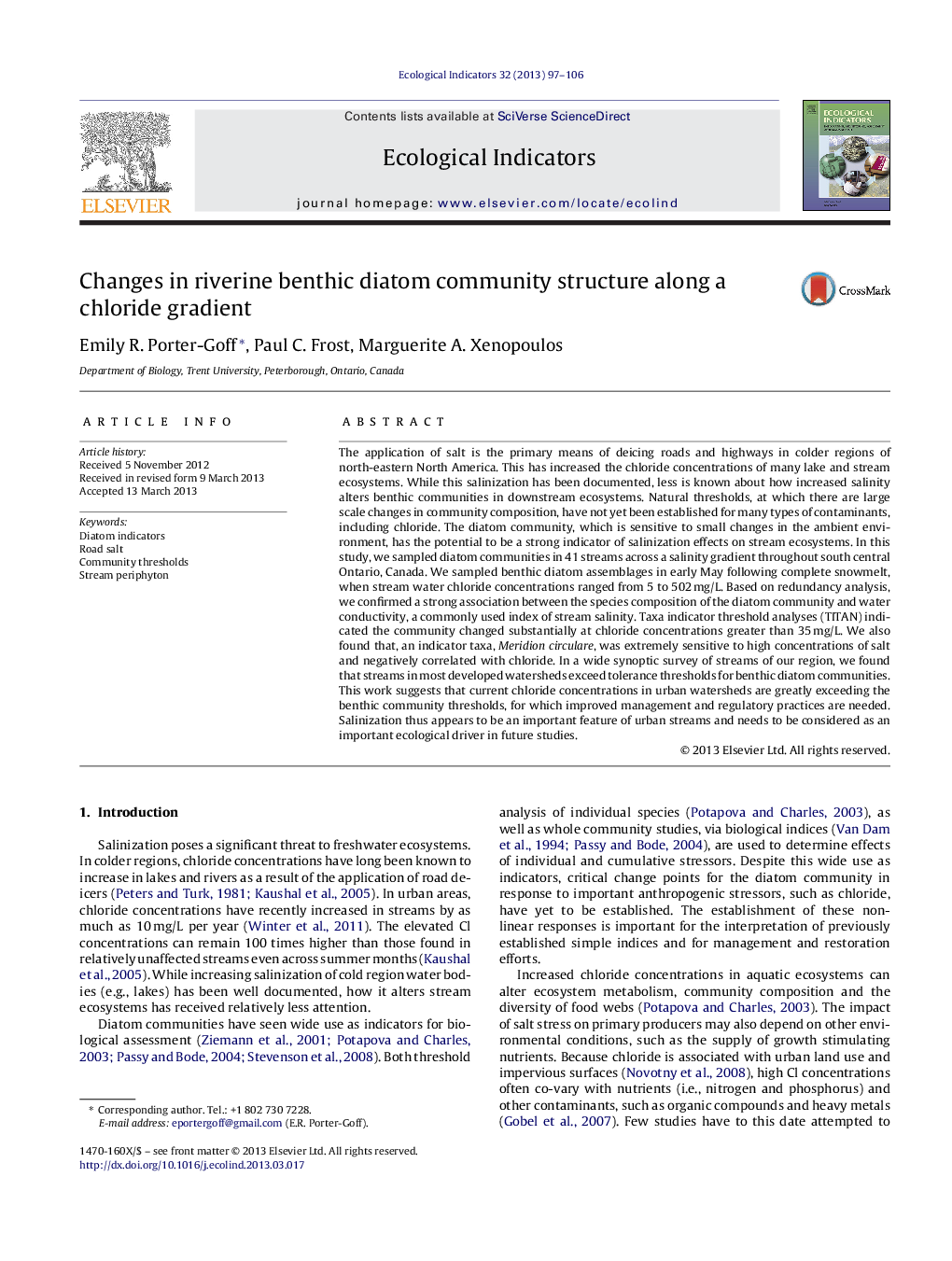| Article ID | Journal | Published Year | Pages | File Type |
|---|---|---|---|---|
| 4373391 | Ecological Indicators | 2013 | 10 Pages |
Abstract
The application of salt is the primary means of deicing roads and highways in colder regions of north-eastern North America. This has increased the chloride concentrations of many lake and stream ecosystems. While this salinization has been documented, less is known about how increased salinity alters benthic communities in downstream ecosystems. Natural thresholds, at which there are large scale changes in community composition, have not yet been established for many types of contaminants, including chloride. The diatom community, which is sensitive to small changes in the ambient environment, has the potential to be a strong indicator of salinization effects on stream ecosystems. In this study, we sampled diatom communities in 41 streams across a salinity gradient throughout south central Ontario, Canada. We sampled benthic diatom assemblages in early May following complete snowmelt, when stream water chloride concentrations ranged from 5 to 502Â mg/L. Based on redundancy analysis, we confirmed a strong association between the species composition of the diatom community and water conductivity, a commonly used index of stream salinity. Taxa indicator threshold analyses (TITAN) indicated the community changed substantially at chloride concentrations greater than 35Â mg/L. We also found that, an indicator taxa, Meridion circulare, was extremely sensitive to high concentrations of salt and negatively correlated with chloride. In a wide synoptic survey of streams of our region, we found that streams in most developed watersheds exceed tolerance thresholds for benthic diatom communities. This work suggests that current chloride concentrations in urban watersheds are greatly exceeding the benthic community thresholds, for which improved management and regulatory practices are needed. Salinization thus appears to be an important feature of urban streams and needs to be considered as an important ecological driver in future studies.
Keywords
Related Topics
Life Sciences
Agricultural and Biological Sciences
Ecology, Evolution, Behavior and Systematics
Authors
Emily R. Porter-Goff, Paul C. Frost, Marguerite A. Xenopoulos,
